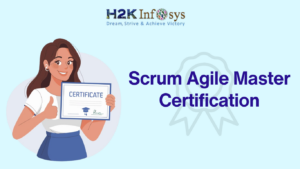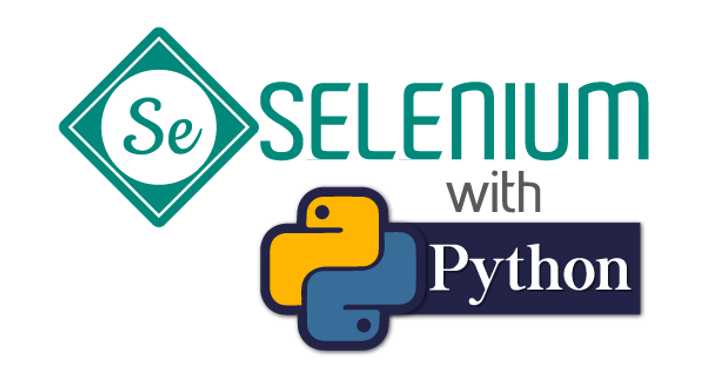1) As a tester, what should the solution be when requirements evolve continuously?
When the requirements are constantly evolving, the agile testing should take the following strategy.
- Build generic test plans and test cases that reflect on the requirement’s purpose rather than the specific details.
- Consult directly with the product owners or business analysts to consider the scope of the change.
- Ascertain that the team is aware of the risks associated with evolving requirements, particularly at the end of the sprint.
- If you’re going to automate a feature, it’s better to wait until it’s stable and the specifications are finalized. By negotiating or implementing changes in the next sprint, changes will be held to a minimum.
2) What are the advantages and disadvantages of exploratory and scripted testing?
| Advantages | Disadvantages | |
| Exploratory Testing | It involves less planning. – Easy to change as specifications change – It’s especially helpful where documentation is limited. | It is difficult to present results and Coverage to project management. |
| Scripted Testing | It’s very useful when checking against legal or regulatory requirements. | Test scheduling takes time as the same steps are evaluated over and over.Changes in specifications are difficult to modify |
3) What is the difference between Scrum and Extreme Programming?
| Scrum | Extreme Programming (XP) |
| Scrum teams typically have to work in iterations or sprints, which typically run up to two weeks to one month. | The XP team operates in one-week or two-week iterations. |
| The Scrum teams do not allow their sprints to be changed. | XP teams are more adaptable and alter iterations more often. |
| In scrum, the owner of the product gives priority to the backlog of the product, but the team determines the order in which the backlog items will be created. | The XP team works in strict priority order, with the customer prioritizing the features produced. |
| Scrum does not recommend any engineering procedure. | XP does have engineering practices that must be followed. |
4) What are epics, user stories, and tasks?
Epic: The specified software functionality of the customer which is included in the backlog of the product is known as epic. Epics are broken down into stories.
User Stories: User stories are written from the client’s viewpoint to define project or business functions, and they are executed in a precise sprint as scheduled.
Task: Later user stories are divided into various activities.
5) What is refactoring, and how does it work?
The existing code is modified to improve performance; this is re-factoring. The core functionality remains the same during refactoring.
6) How do you determine the sprint’s velocity when the team’s capacity fluctuates?
The velocity of a sprint is usually calculated using professional judgment based on historical data when planning a sprint. The mathematical formula for calculating the sprint’s velocity is as follows:
• First – finished story points X team capacity: If capacity is expressed as a percentage of a 40-hour workweek,
• Second – story points finished / team capacity: If capacity is measured in man-hours,
In our case, the second method is appropriate.

7) What are the major differences between sprint backlog and product backlog?
Product backlog: It includes a list of all desirable characteristics and is managed by the product owner.
Sprint backlog: It is a subcategory of the product backlog managed by the development team and is committed to delivering it in a sprint. It is formed at the Sprint Planning Meeting
8) what is the key difference between Incremental and Iterative development in agile methodology?
Iterative: The iterative method is a continuous software development process in which software development cycles (Sprints and Releases) are repeated until the final product is accomplished.
Sprint 1, 2,… n in Release 1
Sprint 1, 2,…n in Release n
Incremental: Incremental development divides the system’s functionality into smaller pieces or sections. From the requirements to the deployment, each portion of functionality is delivered through cross-discipline work in each increment.
9) Describe Spike and Zero sprint in Agile? What is the aim of utilizing it?
Sprint Zero: It is incorporated to undertake some research before starting the first sprint. Generally, this sprint is used during the beginning of the project for activities such as setting the development platform, planning the product backlog, and so forth.
Spikes: Spikes are a type of story which can be used for research, development, design, and prototyping. You can take spikes in between sprints to work on any technical or design issues. Technical and functional spikes are the two types of spikes.
10) Define test-driven development, and how does it work?
TDD, or test-driven development, is also referred to as test-driven design. In this strategy, the developer first starts writing an automated test case that creates a new functionality or modification and then makes short codes to pass that test and then re-factors the new code to meet required standards.
11) Are prototypes and wireframes frequently used as a component of?
Prototypes and wireframes are two types of prototypes commonly used in Empirical Design.
12) Describe what is the Application Interface?
Application Binary Interface is a standard that defines requirements for the functionality of binary applications across various system platforms and environments.
13) What is the difference between a burn-up and a burn-down chart in Agile Testing?
Charts are used to track the project’s burn-up and burndown progress.
Burnup chart: The burnup chart depicts the progression of completed stories over time.
Burndown chart: The burndown chart depicts how much work was left to do over time.
14) What is the Scrum ban?
Scrum ban is a Scrum and Kanban-based software development model. It’s made for projects that require a lot of maintenance, have a lot of complex user stories, and experience a lot of programming failures. Using this method, the team’s workflow is directed in such a way that each user story or programming error is finished in the shortest possible time frame.
15) What is the difference between story points, efforts, and scales?
It’s used to talk about the story’s difficulty without assigning a timeframe on it. The Fibonacci sequence (1,2,3,5,8, 13,…..100) is the most common scale used, though some teams use linear scales (1,2,3,4….), Powers of 2 (1,2,4,8……), and cloth size (XS, S, M, L, XL).
16) What is the purpose of a tracer bullet?
The tracer bullet is a spike with the current architecture, best practices, and technology set, all of which result in development code. It’s not junk code, but it could be a restricted implementation of the functionality.
17) What is meant by test stub?
A test stub is a small piece of code that substitutes an undeveloped or fully formed component in a system being tested. The test stub is meant to imitate the actual component by producing specific known results and replacing the actual component.
18) How are the RUP (Rational Unified Process) and Scrum methodologies different?
| RUP | SCRUM |
| The formal cycle is divided into four stages, but some workflows can run simultaneously. | Each sprint is a full cycle. |
| A formal project plan is used, along with multiple iterations. | No end to the project plan. At the end of the current iteration, each next iteration plan has been developed. |
| Before the start of the project, the scope is defined and documented in the scope document. The scope of the project can be changed at any time. | Instead of the scrum, it uses a project backlog. |
| Scope Document, formal functional requirements package, system architecture document, development plan, test scripts, and so on are examples of artifacts. | The only formal artifact is operational software. |
| Suggested for medium to high complexity, long-term, large-scale corporate projects | Recommended for quick improvements and organization that are not subjected to a deadline. |
19) What is the significance of continuous integration in Agile?
For the following reasons, Agile testing requires continuous integration.
- It aids in the timely release of software by identifying bugs or integration errors.
- Since agile code is delivered in sprints of two to three weeks, consistent build quality is essential, and continuous integration guarantees it.
- It aids in the maintenance of a high-quality, bug-free code base.
- Using the automatic building and merging function, continuous integration helps to check the impact of development work on branches on the main trunk.
20) What type of testing is done during the Agile Testing process?
Automated unit testing and exploratory testing are the most common testing activities in Agile.
A tester may perform functional and non-functional tests on the Application Under Test, depending on project requirements (AUT).
21) What does Agile Velocity mean?
Velocity is a metric that is calculated by adding all estimates of effort associated with finished user stories in an iteration. It calculates how much work Agile Testing can accomplish in a sprint and how long it will take to complete a project.
22) What are the characteristics of a good Agile tester?
The qualities of a good Agile tester are as follows:
- He/she should be able to quickly comprehend the requirements.
- Agile testers should be well-versed in Agile testing principles and concepts.
- As requirements change, testers must be aware of the risks involved.
- The agile tester must be able to prioritize tasks according to requirements.
- It is critical to maintain constant communication between business associates, developers, and testers.
23) Who are the members of the Agile testing team?
- Scrum Masters: This role coordinates the majority of the inputs and outputs required for an agile testing system.
- Development Managers: They employ and bring the best people to the team.
24) Describe the Scrum Master’s responsibilities in detail.
The following are some of the key responsibilities of a Scrum Master:
- Comprehend the specifications and turn them into functional software.
- Observation and tracking
- Communication and reporting
- Check Master for Processes
- Quality Master
- Get Rid of Obstructions
- Resolve disputes.
- shield the team and feedback on performance.
- conduct meetings and resolve barriers.
25) What are the Agile quality strategies?
The Agile quality strategies are:
- Refactoring is an agile quality strategy.
- Development that isn’t done in separation.
- Code analysis, both static and dynamic
- Inspections and reviews
- Iteration/sprint demonstrations
- Demonstration with all hands.
- Milestone reviews
- Quick feedback loops
- Policies and procedures.
26) What are some screenshot tools that can be useful when working on Agile testing projects?
Here are some tools that are commonly used for screenshot purpose in agile testing projects:
- BugDigger
- Usersnap
- Snagit
- BugShooting
- qTrace
- Bonfire
27) What are the benefits of keeping iteration length consistent throughout the project?
The benefits include:
- It allows the team to objectively measure progress;
- It provides a consistent method of measuring team velocity;
- It aids in the establishment of a consistent delivery pattern.
28) Who should re-prioritize a timeboxed plan if it needs to be re-prioritized?
If a timeboxed plan needs to be reprioritized, the entire team, the product owner, and the developers should be involved.
29) Describe what a burndown chart should illustrate.
The burn-down chart depicts the amount of work that needs to be completed before the timebox (iteration) expires.
30) Explain the difference between Scrum and Agile.
- Scrum: In scrum, a sprint is a basic development system. Following each sprint, a planning meeting is held, during which the sprint’s tasks are recognized and projected. The team creates a finished portion of a product during each sprint.
- Agile: Each iteration of Agile testing involves a team going through the entire software development cycle, including planning, design, coding, requirement analysis, unit testing, and acceptance testing when a product is shown to stakeholders.
In a simplified way, Agile testing is a practice, and scrum is the method for implementing it.
31) Describe the challenges that AGILE Testing software development face.
The major challenges that agile software development face is:
- The requirement of Agile testing and customer involvement
- Greater impact on the management than developers
- Before progressing to the next functionality, each feature must be completed
- All code must function properly to ensure the application is in a working state
- It necessitates more planning
32) When should you avoid using Agile?
Before you start using Agile methodology, you should ask yourself the following questions:
- can the functionality be segmented?
- Is the customer accessible?
- Are the requirements agile testing?
- Is the project time-constrained?
- Is the team professional enough?
33) Describe how you can easily incorporate scrum into your project.
There are some suggestions for implementing scrum in your project.
- Organize the backlog.
- Estimate the scale of the backlog of product items.
- To finish the sprint backlog, define the sprint requirements and duration.
- Split down requirements into tasks after calculating the team sprint budget.
- Collaborate workspace- a hub for all team discussions, including schedules, roadmaps, key deadlines, practical sketches, problems, logs, and status updates.
- Sprint- Make sure you finish each element before going on to the next. A sprint can only be stopped after the other options have been exhausted.
- Have a regular stand-up meeting: In this meeting, you can discuss what has been accomplished since the last meeting, what will be accomplished before the next meeting, and whether anything is obstructing their progress.
- Use a burndown map to keep track of your success regularly. You can see whether you’re on target or falling behind by looking at the burndown map.
- Finish each element before going on to the next.
- Schedule a sprint summary meeting after the sprint to discuss what was accomplished or delivered during the sprint.
34) What does it mean to have a product roadmap?
The holistic view of product features that create the product vision is referred to as a product roadmap.




























